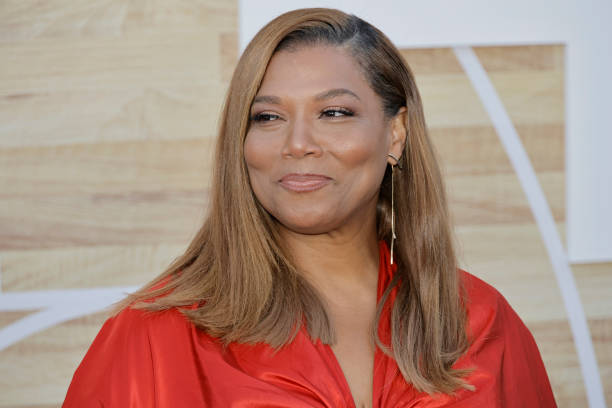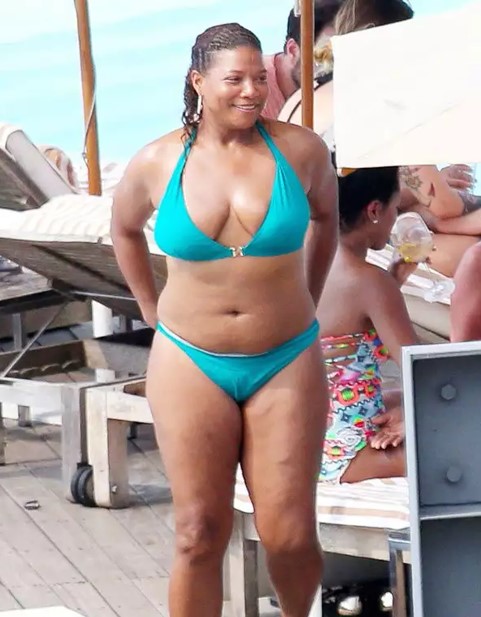
Black women have had a complicated history with the body mass index (BMI) chart. Now Queen Latifah is speaking out about the anger she felt being categorized as obese.
"She's showing me different body types, and she's telling me, this is what your BMI is, this is what your weight is, and you fall into this category of obesity," Latifah says. "I was mad at that," Latifah explains in a preview clip for "The Red Table Talk". "It pissed me off. I was like, 'What? Me?' I mean, I'm just thick. She said you are 30% over where you should be. And I'm like, 'Obesity?'"
Latifah is no stranger to the public scrutiny of her appearance as a Black woman in the industry. The scrutiny was at an all-time high in the 90s when the 52-year-old was filming "Living Single".
"We looked like four women who live in Brooklyn, and that's what we were supposed to be representing and we loved being able to do that," Latifah says of herself and her three co-stars. "But the word came down that we needed to lose weight. We're on the number one show among Black and Latino households in America, and you're telling us we need to lose weight. Maybe you're the one with the problem."
RELATED: Queen Latifah at 50+: Blazing The Trail For Women
Black women and the BMI chart
BMI charts, which are designed to measure your body fat based on your height and weight, determine which category you fall into: underweight, healthy, overweight or obese. However, the problem lies in the fact that the "ideal" measurements of the chart were designed with caucasian men and women in mind without taking into consideration a person's ethnicity, gender or body makeup. In a nutshell, these charts don't accurately portray the body types of Black women making it more likely for Black women to be labeled obese and overweight.
In fact, based on direct measures of body fat, such as dual-energy x-ray absorptiometry (DXA), researchers found that a Black woman may not be overweight or obese even though the BMI formula indicates that she is.
This is due largely in part to the fact that the chart does not distinguish between excess fat, muscle or bone mass. According to Maya Feller, a New York-based registered dietitian, this greatly impacts women of color.

"For women of color, we tend to have more muscle mass and also be in bigger bodies," says Feller. "So the BMI will falsely say that we are in the overweight or obese category and then we get flagged, but we may be healthy metabolically."
According to BMI charts, you are considered obese if you have a BMI of...30 or more. However, that has been proven to be highly inaccurate.
A 2003 study found that higher BMIs are not unhealthy for Black people, and Black women, in particular, do not see an increased mortality risk until they reach a BMI of 37.
Despite this, doctors still diagnose Black patients that have higher BMIs with obesity, high blood pressure and diabetes. These patients are unfairly stigmatized for being "overweight."
Health and body size aren't always connected
The reality is health and body size aren't always connected. This is a stigma Latifah has been trying to break for years. "We need to change the conversation. We need to change the culture, we need to change the stigma that's involved in it," Latifah told PEOPLE in May. "Let's just get real with it. And then let's back it up with some information that can empower you to do something about it, or change your mentality about it."
One way the "Equalizer" actress has learned to change her mentality is through the power of saying no.
"I practice my no's," she says. "I go in the mirror and I say, no, no, no, no, like 20 times. And that's it. I need to be okay with me. If I'm okay, then I feel like I can do anything. But if I'm not okay, I have to say something. Like, it's time to take a break, stop, cut."
As for those looking for an alternative to the problematic BMI chart?
Feller recommends looking at your health as a whole. She says a variety of factors beyond weight should be looked at by doctors and other health professionals.
"How's your blood pressure? How's your blood sugar? How are your lipids? We need to change the conversation to really be talking about metabolic health," she adds.








